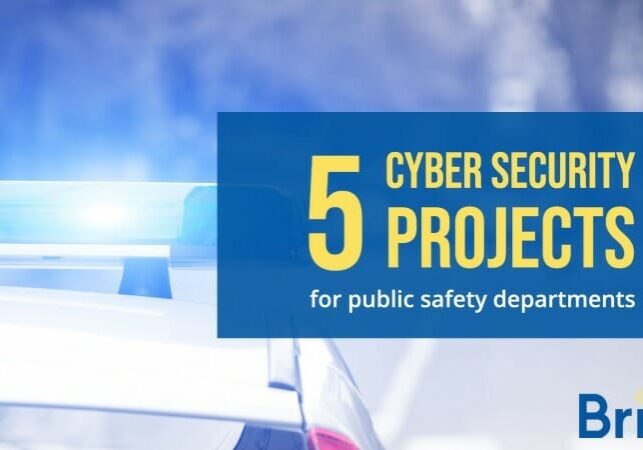5 Cybersecurity Projects for Public Safety Departments
September 16, 2019
A cybersecurity plan and strategy – one essential element of an organization that wouldn’t make the list if I asked you to describe a public safety department. Whether it be police, fire or campus safety, there are a set of things that everyone would list out like patrol cars, radios, computers, interview rooms, body worn cameras, etc. And while there is an emphasis on safety, it doesn’t extend to the security of digital assets.
With big name breaches like Target, Equifax and Marriott dominating headlines, it’s easy to think that cybersecurity is just for enterprise companies with millions of accounts containing personal information, but in reality, it’s for everyone – including individuals and public safety departments.
Cybersecurity 101
Cyber security is the practice of protecting an organizations data and information from cyber criminals who steal valuable information and sell it or hold it ransom until the organization pays. In order to protect data, tools and systems can be implemented that safeguard the IT network so that hackers can’t gain access to the data or information.
Public safety departments deal with sensitive, critical information. Not only is it important to protect the information as evidence and resources, but it is essential to ensure that personal data doesn’t end up in the wrong hands. While departments may not have a dedicated IT department or resource, there are a few tools and best practices that any department can adhere to.
THE Cybersecurity Plan for Public Safety Departments
When first implementing a cybersecurity plan for a public safety department, the priority is securing any potential entry point. Overall, there are 5 areas of focus: endpoint protection, network security, secure communication, enterprise backup and multi-factor authentication.
1. Endpoint protection: Endpoints are typically classified as end-user devices (mobile devices, laptops, tablets, desktop PCs) that are connected to the network. As those devices explode and workspaces become more mobile, the endpoint becomes more susceptible to attack. Whether you are working on your desktop at your desk or your tablet while out on patrol each is an endpoint for an attack. Minimize the number of backdoors attackers can take advantage of by implementing an endpoint tool.
2. Network security: At the end of the day all devices, data and information live on an organizations network and securing it is critical. From email and law enforcement databases to HR platforms, all data living on the network is susceptible to attacks. Network security provides insight into lateral movement within a network to monitor and detect unusual activity.
3. Secure communication: Internal communication is necessary for day-to-day operations, add in the factor of a mobile workforce and those out on patrol, implementing addition security to protect those communications is essential. Secure communication also provides a reliable line of communication which ensures maximum uptime.
4. Enterprise backup: Backups are lifesavers in the event of a disaster or an attack. During normal operations, the system captures and saves the network at that time (think of a word doc automatically saving as you work). If a natural disaster or cyber-attack occurs, then the system can be restored from the last uncompromised backup.
5. Multi-factor authentication(MFA): MFA is becoming a standard in the security world. Rather than just having a single password to log into a system, MFA requires two pieces of information to authenticate the user. It’s a combination of something you know (username or password), something you have (USB hardware token) or something you are (fingerprint, retinal scan, facial recognition). Ideally, this restricts the attacks ability to infiltrate a system because even if they can guess that your password is your favorite football team and your birthday, it’s impossible to get the second factor. Read more about MFA here.
Traditionally, implementing a proper security plan has been expensive and unmanageable, but that is no longer the case. The advancements in technology and array of solutions available means that the right one is out there. Brite helps departments cut through the clutter to find the right solutions and best tools to for their unique needs. Are you ready to secure your department? Reach out and we’ll get you in touch with your local rep today!

Posted in Captain's Corner (Legacy), Public Safety
